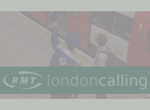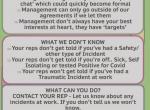- Get the latest stations news on your Ipad here
The Bethnal Green tube shelter disaster turned out to be the worst civilian disaster of World War 2, yet very few people know about it.
The Central line had not reached further East than Liverpool Street when the 2nd World war broke out, so work on the unfinished Bethnal Green underground station stopped. It was a natural place for East Londoners to shelter in safety from the bombs, particularly during the Blitz. There was no track and no trains could run through it, so it could accommodate up to 10,000 people sleeping on the platforms, in the tunnels and in the pit where the track would normally have been. Unlike the present 3 entrance/exits to the station there was only one entrance to the shelter during the war. You went through a narrow doorway that opened out straight onto the rough, wide steps, that were open to the elements so there could be no light to show the way down otherwise enemy planes would have seen it.
However, once the worst of the blitz was over fewer and fewer people were using the shelter until 1st March 1943 when the Allies bombed Berlin heavily. Once the news got out next day everyone was expecting reprisals so, more people than of late were heading to the station on the evening of 3rd March. It had been raining and the steps leading down to the shelter were wet from the rain, but approximately 2000 were already safely down below soon after the siren went off at 8.17pm. Ten minutes later 3 buses stopped at the entrance to unload their passengers from the pubs and cinemas that had just closed due to the alert. Suddenly those waiting to enter the single, narrow entrance (unmanned that night, though nobody knows where the policeman was) heard the unfamiliar, deafening sound of a brand new ‘anti-aircraft rocket battery’ firing in the park nearby. Nobody knew it was there and the whizzing sound of hundreds of rockets firing made everyone assume it was some new deadly enemy bombs exploding.
At that same moment a woman with a child fell at the bottom of the wet, slippery stairway, pulling another man on top of them and before they could get up others fell on top of them like a domino effect. The crowd above continued pressing forward, unable to see what was happening below in the dark. A complete jam of about 300 people, five or six deep, built up within seconds. In order to keep it secret it took just over 3 hours to release everyone. It was 11.40pm before the last of the 173 dead was pulled out – 84 women, 62 children and 27 men. Over 90 were injured. Many more suffered life-long trauma, particularly the rescuers. This was the worst civilian disaster of World War 2 and it wasn’t caused by any enemy action as no planes were detected overhead in the area that night and nobody knows to this day why that new rocket battery was fired, or why there was no policeman on duty at the entrance.
The Stairway to Heaven Memorial Trust was set up just over 5 years ago to raise money to build a fitting memorial next door to the station entrance where the disaster occurred. It will honour all those involved in the tragedy – the victims, the survivors and the rescuers. Sufficient funds have been raised for the first phase of the memorial, which will be finished by the end of February, but the charity still doesn’t have enough money to complete the final phase – the ‘stairway’ roof. This will be made of sustainable teak and have the surnames of all the victims carved in large letters on the side. It will also have 173 conicals in the roof to allow light to shine through to represent those who died.
The charity has recently discovered through a new book that has just been published** that in 1941 (so 2 years before the disaster occurred) Bethnal Green Council had written to the government three times for permission to make the entrance safer, especially if a large number of people needed to enter. They wanted to strengthen the doorway, put in central handrails, cover the steps to prevent them becoming wet and slippery and install lighting. But this had been refused each time. After the tragedy the Government allowed these things to be carried out and they also insisted that every tube station used as a shelter should have central handrails on the stairs and proper lighting. The council was not allowed to reveal this under the Official Secrets Act and were sworn to secrecy. The Home Secretary of the day, Herbert Morrison, blamed the victims for the tragedy by saying it was due to a ‘loss of self-control’. This was despite the survivors and the officials (that gave evidence to the secret enquiry a few days later) stating that there had been NO panic.
East Londoner had gone through the worst of the blitz and the noise of one new rocket was not going to spook them. But by blaming the victims it ensured that everyone kept it secret. If all this had been known at the time the Home Secretary would probably have had to resign. So, it was like the Hillsborough of its day – blame the victims and cover up those responsible. Bethnal Green Council was made to take the blame and the whole event was kept secret on the grounds of keeping up morale and not allowing the enemy to gain propaganda from it. The lady mayor left London a broken woman. Imagine what it must have been like to have been blamed for the deaths and injuries of so many people, knowing that you were not to blame but could not defend yourself.
The 70th anniversary of the disaster will be marked by a Memorial Service on Sunday 3rd March at 2pm at St. John on Bethnal Green Church (next door to Bethnal Green tube station). All are welcome and there will be refreshments available in the church after the Service and an exhibition about the disaster. Patrons of the charity Tommy Walsh, Cheryl Baker and Harry Harris will be present, as will Len Goodman who lost a cousin in the disaster.
We’d really love to be able to finish this memorial at long last during this special anniversary year. If you would like to make a donation please go to our website www.stairwaytoheavenmemorial.org or give up to £10 by text to 70070 using the words STHM £ or follow us on twitter.
Thanks
Sandra Scotting (Hon. Secretary/Trustee)
**‘The book 'Mr. Morrison’s Conjuring Trick’ by Rick Fountain will be available for sale at the Memorial Service.
- The RMT London Transport Region made a donation to 'The Stairway to Heaven Memorial Trust' at the recent Regional Council Meeting. The charity is building a memorial to the 173 who died in the worst civilian disaster of World War II at Bethnal Green station
- rmtlondon's blog
- 7971 reads






